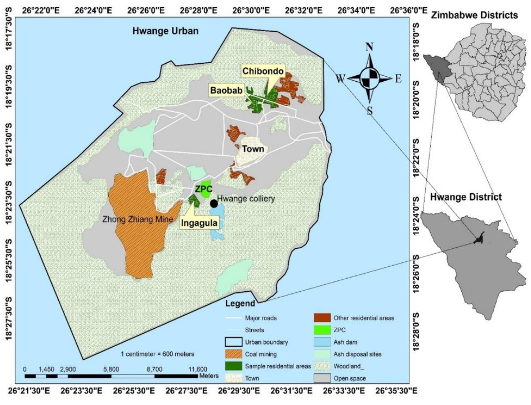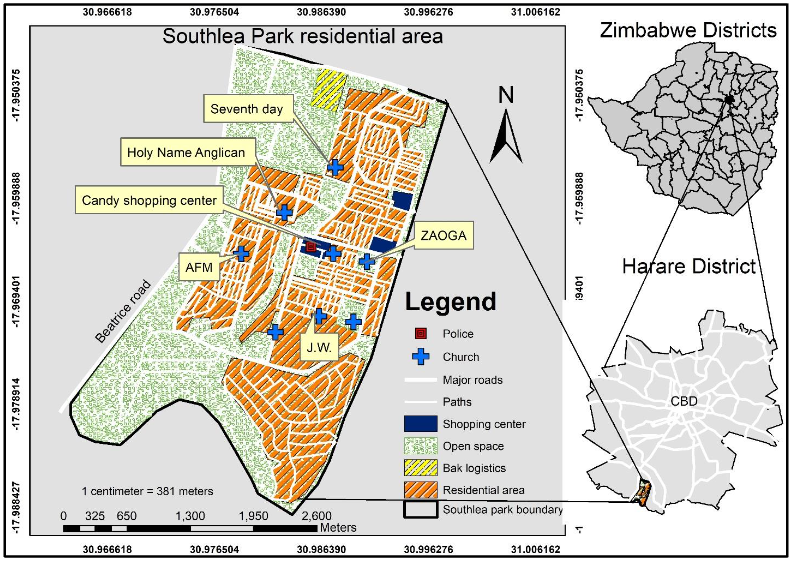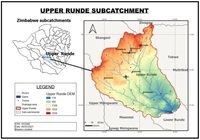Research on the change of China’s elderly service policies—An empirical analysis based on 117 policy texts
Abstract
Population aging has emerged as a significant global concern. This article analyzes 117 policy texts in China since the reform and opening-up, borrowing Rothwell and Zegveld’s classic policy instrument theory to create a two-dimensional analysis framework. The X-dimension of the framework represents the three fundamental policy tools of supply, environment, and demand, while the Y-dimension consists of internal elements such as service subjects, service targets, service content and methods, and guarantee measures. Using this framework, the elderly service policies are categorized into three stages: the budding stage, the developing stage, and the perfecting stage. The study finds that China’s elderly service policies are primarily driven by environment-type tools, with supply-type and demand-type tools serving as secondary tools. The policy system is structurally imbalanced as a result. Over the long term, the trend is towards an increasing number of issuing subjects for Chinese elderly service policies. Moreover, the number of policies jointly issued by different departments is gradually increasing, and the issuing subjects are becoming increasingly diverse. The positioning of responsibilities among government, market, society, and family has been optimized, and the role of the government is becoming more rationalized.
References
[1]Wu Y, Liu H, Li B, et al. Thermal adaptation of the elderly during summer in a hot humid area: Psychological, behavioral, and physiological responses. Energy Build. 2019; 203: 109450.
[2]Zhu Y, Zhu BW, Te Y, et al. Exploring the Key Factors of Old Neighborhood Environment Affecting Physical and Mental Health of the Elderly in Skipped-Generation Household Using an RST-DEMATEL Model. Systems. 2023; 11(2): 104.
[3]Sudo K, Kobayashi J, Noda S, et al. Japan’s healthcare policy for the elderly through the concepts of self-help (Ji-jo). mutual aid (Go-jo), social solidarity care (Kyo-jo), and governmental care (Ko-jo). Bioscience trends. 2018; 12(1): 7–11.
[4]Zhang Y, Zhang M, Hu H, He X. The Sensitivity Analysis for Supply and Demand Dynamics System of Aged Services Resource Allocation in China. Systems. 2022; 10(5): 147.
[5]Foster L, Walker A. Active and Successful Aging: A European Policy Perspective. The Gerontologist. 2015; 55(1): 83–90.
[6]Yi J, Lu D, Deng Y. The Future of Social Elderly Care in China: From the Perspective of Service-Oriented Government. Journal of Service Science and Management. 2016; 9(3): 211–218.
[7]Palley HA. International Trends in Long-Term Care Policy for the Elderly. International Area Review. 2008; 11(2): 267–286.
[8]Jacobsen FF. Understanding public elderly care policy in Norway: A narrative analysis of governmental White papers. Journal of Aging Studies. 2015; 34: 199–205.
[9]Börsch-Supan A, Brandt M, Hunkler C, et al. Data Resource Profile: The Survey of Health, Ageing and Retirement in Europe (SHARE). International Journal of Epidemiology. 2013; 42(4): 992–1001.
[10]Van Hooren F, Becker U. One Welfare State, Two Care Regimes: Understanding Developments in Child and Elderly Care Policies in the Netherlands. Social Policy & Administration. 2012; 46(1): 83–107.
[11]Xu J, Wang J, Wimo A, et al. The economic burden of dementia in China, 1990–2030: Implications for health policy. Bull World Health Organ. 2017; 95(1): 18–26.
[12]Harper S. Economic and social implications of aging societies. Science. 2014; 346(6209): 587–591.
[13]Boudiny K. ‘Active ageing’: From empty rhetoric to effective policy tool. Ageing & Society. 2013; 33(6): 1077–1098.
[14]Bloom DE, Canning D, Fink G. Implications of population ageing for economic growth. Oxford Review of Economic Policy. 2010; 26(4): 583–612.
[15]Yang C, Liu Y. Interpretation of the Connotation and Prospective Thoughts on High-Quality Development of Elderly Care Services (Chinese). Social Security Review. 2021; 5(4): 118–130.
[16]Schwiter K, Berndt C, Truong J. Neoliberal austerity and the marketisation of elderly care. Social & Cultural Geography. 2015; 19(3): 379–399.
[17]Kokkonen K, Rissanen S, Hujala A. The match between institutional elderly care management research and management challenges-a systematic literature review. Health Res Policy Sys. 2012; 10(35).
[18]Jia M. The Impact of Long-Term Care Insurance Policy on the Health Level of the Elderly: An Examination Based on CHARLS Tracking Survey Data (Chinese). Aging Research. 2024; 11(1): 218.
[19]Dai W. Theoretical Basis, Institutional Framework, and Key Mechanisms of Long-Term Care Insurance in China (Chinese). Social Security Review. 2023; 7(1): 95–106.
[20]Rostgaard T, Jacobsen F, Kröger T. Peterson E. Revisiting the Nordic long-term care model for older people—still equal? European Journal of Ageing. 2022; 19(2): 201–210.
[21]Zuloaga Vasquez S. The Economics of Market Distortions: Case Study of US Healthcare System. Universidad Rey Juan Carlos. Available online: https://burjcdigital.urjc.es/server/api/core/bitstreams/0498c6e5-4f1f-4382-870d-bc0880f08b3e/content (accessed on 17 June 2024).
[22]Wang J. A Comparison of Financing and Guarantee Systems in the Second Batch of Pilot Cities for Long-Term Care Insurance: Analysis Based on 12 Policy Documents. Secretary. 2024; 42(3): 52–66.
[23]Österle A. Long-term care. In: Research Handbook on Health Care Policy. Edward Elgar Publishing; 2024. pp. 191–207.
[24]Yang Y. Research on the Problems and Countermeasures of Community-Based Elderly Care Service Centers in the New Era (Chinese). Aging Research. 2024; 11: 1241–1246.
[25]Chen Y, Yang C. Integration of Medical and Nursing Services with Elderly Health Management Utilization (Chinese). Finance and Economics Research. 2023; 49(12): 121–135.
[26]Kim H, Kwon S. A decade of public long-term care insurance in South Korea: Policy lessons for aging countries. Health Policy. 2021; 125(1): 22–26.
[27]Raghavan A, Demircioglu MA, Taeihagh A. Public health innovation through cloud adoption: A comparative analysis of drivers and barriers in Japan, South Korea, and Singapore. International Journal of Environmental Research and Public Health. 2021; 18(1): 334.
[28]Liu C, Guo C. Innovative Research on Intelligent Medical and Nursing Service Mode under the Background of “Internet+” (Chinese). E-commerce Reviews. 2024; 14: 2174–2180.
[29]Beard JR, Officer A, de Carvalho IA, et al. The World Report on Ageing and Health: A Policy Framework for Healthy Ageing. The Lancet. 2016; 387(10033): 2145–2154.
[30]Yue Z, Xiang N, Li H, Liu E. The Evolution Trend of Availability of China’s Community-Based Care Services and Its Impact on the Cognitive Function of Elderly People: 2008–2018. International Journal for Equity in Health. 2021; 20(1).
[31]Douglas H, Georgiou A, Westbrook J. Social Participation as an Indicator of Successful Aging: An Overview of Concepts and Their Associations with Health. Australian Health Review. 2017; 41(4): 455–462.
[32]Liu J, Rozelle S, Xu Q, et al. Social Engagement and Elderly Health in China: Evidence from the China Health and Retirement Longitudinal Survey (CHARLS). International journal of environmental research and public health. 2019; 16(2): 278.
[33]Ai J, Feng J, Yu Y. Elderly Care Provision and the Impact on Caregiver Health in China. China & World Economy. 2022; 30(5): 206–226.
[34]Hussein S, Ismail M. Ageing and Elderly Care in the Arab Region: Policy Challenges and Opportunities. Ageing Int. 2017; 42(3): 274–289.
[35]Chen F, Liu G, Mair CA. Intergenerational Ties in Context: Grandparents Caring for Grandchildren in China. Social Forces. 2011; 90(2): 571–594.
[36]Krings MF, van Wijngaarden JDH, Yuan S, Huijsman R. China’s Elder Care Policies 1994–2020: A Narrative Document Analysis. International Journal of Environmental Research and Public Health. 2022; 19(10): 6141.
[37]Wu B, Cohen MA, Cong Z, et al. Improving Care for Older Adults in China: Development of Long-Term Care Policy and System. Research on Aging. 2021; 43(3–4): 123–126.
[38]Näre L. The Ethics of Transnational Market Familism: Inequalities and Hierarchies in the Italian Elderly Care. Ethics and Social Welfare. 2013; 7(2): 184–197.
[39]Saraceno C. Social Inequalities in Facing Old-Age Dependency: A Bi-Generational Perspective. Journal of European Social Policy. 2010; 20(1): 32–44.
[40]Liao P, Liu J, Feng L. Research on Inequality of Medical Expenditures Between Urban and Rural Residents from the Perspective of Health Equity: Based on the Life Cycle Model (Chinese). Modern Economic Science. 2024; 46(2): 1–16.
[41]Hu R, Duan X. Community Characteristics, Individual Socioeconomic Status, and Health Inequalities Among the Elderly. Journal of Guizhou University of Finance and Economics. 2024; 42(3): 72–80.
[42]Li LW, Liu J, Xu H, Zhang Z. Understanding Rural-Urban Differences in Depressive Symptoms Among Older Adults in China. Journal of Aging and Health. 2016; 28(2): 341–362.
[43]Liu YB, Liu L, Li YF, Chen YL. Relationship between Health Literacy, Health-Related Behaviors and Health Status: A Survey of Elderly Chinese. International journal of environmental research and public health. 2015; 12(8): 9714–9725.
[44]Feng Z, Liu C, Guan X, Mor V. China’s rapidly aging population creates policy challenges in shaping a viable long-term care system. Health Affairs. 2012; 31(12): 2764–2773.
[45]Liu X. On the policy orientation of elderly care services in China-based on the perspective of policy changes in elderly care services (Chinese). Hebei Journal. 2014; 34(5): 106–109.
[46]Zhu H. Review and reflection on thirty years of market-oriented reform of elderly services in China (Chinese). Academic Journal of Zhongzhou. 2017; (8): 66–72.
[47]Shi W, Luo X. The evolution of China’s elderly service policy and the role of the state-a welfare pluralism perspective (Chinese). Theoretical discussion. 2014; (2): 169–172.
[48]Lin K, Zhu H. Responding to the challenges of an aging society: The evolution of the targeting of China’s elderly services policy (Chinese). Shandong Social Scienc. 2014; (2): 66–70.
[49]Han Y. The evolutionary path and development direction of China’s elderly service policy--a study based on national-level policy texts from 1949–2014 (Chinese). Southeast Academic. 2015; (4).
[50]Wang L, Di X. Research on the impact of policy mix on the supply of resources for elderly services (Chinese). Journal of Xi’an Jiaotong University (Social Science). 2022; (2): 112–121.
[51]Zhang Y, Yan J. Current situation, problems and public policy choices of elderly services in China (Chinese). Contemporary economic management. 2015; (1): 51–56.
[52]Zhang L, Zhang M, Guan M, Wang J. Community-Based Integration of Medical, Health, and Elderly Care: A New Phase in the Development of the Elderly Care Service System (Chinese). Aging Research. 2023; 10(2): 352.
[53]Hao Y, Guo L. The transmutation of the concept of social elderly service-based on the policy spirit at the national level (Chinese). Urban Observation. 2013; (4): 14–21.
[54]Yin C, Yuan Y, Wang L, et al. Analysis of Hot Topics in Domestic Community Elderly Care Services: Based on the LDA Model and Life Cycle Theory (Chinese). Journal of Medical Informatics. 2024; 45(10): 47–52.
[55]Li B, Zhang A, Chen Y. Theoretical interpretation and policy framework of basic elderly service system construction (Chinese). Population Studies. 2015; 39(2): 91–99.
[56]Zhang N, Wang C. Policy analysis of government purchase of institutional elderly care services in China (Chinese). Economic system reform. 2012; (2).
[57]Wang H. Research on China’s elderly service industry policy from the perspective of policy instruments (Chinese). Research on socialism with Chinese characteristics. 2015; (2): 83–89.
[58]Guo L. 70 years of China’s elderly care services (1949–2019): evolution, policy assessment, and future thinking (Chinese). Social Security Review. 2019; (3): 48–64.
[59]Jia Y. Prominent problems in the construction of China’s elderly service system and ideas for solutions (Chinese). Seeking. 2017; (10): 90–98.
[60]Li X. The imbalance and correction of the public policy structure of elderly services in China (Chinese). Exploration. 2015; (6): 104–109.
[61]Li L, Li L, Deng Y. Reconstruction of public policy on family retirement in China–a perspective based on the change and development of family retirement function (Chinese). China Administration. 2019; (10): 112–119.
Copyright (c) 2025 Author(s)

This work is licensed under a Creative Commons Attribution 4.0 International License.
Authors contributing to this journal agree to publish their articles under the Creative Commons Attribution 4.0 International License, allowing third parties to share their work (copy, distribute, transmit) and to adapt it for any purpose, even commercially, under the condition that the authors are given credit. With this license, authors hold the copyright.










